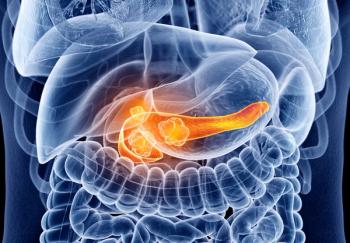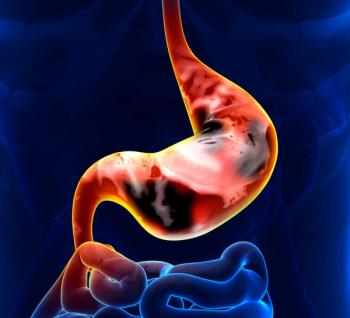
Oncology NEWS International
- Oncology NEWS International Vol 14 No 8
- Volume 14
- Issue 8
XELOX Is Active in Elderly Patients With Metastatic Colorectal Cancer
NAPLES, ITALY-As firstlinetherapy in elderly patients withmetastatic colorectal cancer, XELOX(capecitabine [Xeloda] and oxaliplatin(Eloxatin]) achieved an objectivetumor response rate of 41% (abstract
NAPLES, ITALY-As firstlinetherapy in elderly patients withmetastatic colorectal cancer, XELOX(capecitabine [Xeloda] and oxaliplatin(Eloxatin]) achieved an objectivetumor response rate of 41% (abstract3582). Final results of a phase II multicentertrial conducted by the SouthernItaly Cooperative OncologyGroup, National Tumour Institute inNaples, also showed progression-freesurvival of 8.5 months (95% confidenceinterval [CI]: 6.7-10.3) and overallsurvival of 14.4 months (95% CI:11.9-16.9)."Ongoing phase III trials evaluatingXELOX vs FOLFOX (fluorouracil[5-FU], leucovorin, oxaliplatin) withor without bevacizumab (Avastin) areexpected to confirm that capecitabineshould replace 5-FU/leucovorin as thebackbone of metastatic colorectal cancertherapy," the investigators concluded.Protocol AmendedSafety and efficacy were assessed in76 patients ≥ 70 years, with an EasternCooperative Oncology Group (ECOG)performance status ≤ 2, and life expectancy≤ 3 months. Two XELOXregimens were assessed. The 35 patientsin series 1 received 1,000 mg/m2of oral capecitabine twice daily on days1 to 14 and 85 mg/m2 of oxaliplatin onday 1. In the absence of grade 2 orhigher hematologic toxicity, the doseof oxaliplatin was increased to 100 mg/m2 in cycle 2, and in the absence ofgrade 2 or higher nonhematologictoxicity in cycle 2, the dose of capecitabinewas increased to 1,250 mg/m2twice daily in the third and subsequentcycles.
Once 35 patients were treated inthat series, the protocol was amendedfor the next 45 patients: The dose ofoxaliplatin was increased, first to110 mg/m2 and then to 130 mg/m2.After 451 cycles of treatment, witha median of 6 cycles per patient, theoverall response rate was 41% (95%CI, 30%-53%). No differences in activitywere observed between the firstand second series (Table 1).The disease control rate, which includespartial and complete responsesplus stable disease, was 74%.Good Safety ProfileThe investigators reported thatXELOX had a predictable and manageablesafety profile in the elderly,with predominantly mild to moderateadverse events. The second series ofXELOX administration, which hadhigher levels of oxaliplatin but keptcapecitabine at 1,000 mg/m2, producedmore hematologic adverse events.They included grade 3/4 neutropenia,thrombocytopenia, and anemia, whichdid not occur in the first series. Therewere no treatment-related deaths."XELOX also offers benefit to thepatient in terms of convenience, reduceddiscomfort, and avoidance ofcentral venous access vs infusional5-FU/leucovorin regimens," the investigatorsconcluded. "These benefitsare particularly important in elderlypatients, who may have moredifficulty in traveling to/from the oncologyclinic."
Articles in this issue
over 20 years ago
Intermittent Erlotinib With Docetaxel Shows Promise in NSCLCover 20 years ago
Erlotinib Shows Early Activity in Liver Cancerover 20 years ago
Erlotinib Shows Promise as First-Line Therapy, Phase II Data Showover 20 years ago
Bevacizumab/Erlotinib CombinedBoost Responses in Renal Cell CaNewsletter
Stay up to date on recent advances in the multidisciplinary approach to cancer.



















































































